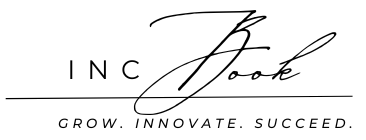Pharmaceutical pricing is a complex and often contentious topic that encompasses a range of factors influencing the cost and affordability of drugs. This article delves into the intricate mechanisms behind drug pricing, exploring the myriad elements that contribute to the final price of medications.
The Intricacies of Drug Development
Research and Development Costs
The journey from a scientific breakthrough to a market-ready drug is long, arduous, and expensive. Pharmaceutical companies invest billions of dollars in research and development (R&D) to discover, test, and gain approval for new drugs. This process involves preclinical studies, multiple phases of clinical trials, and regulatory review. The high failure rate of potential drugs—where only a small fraction make it to market—exacerbates these costs, as successful drugs must bear the financial burden of numerous failed attempts.
Regulatory Approval and Compliance
Regulatory bodies like the FDA in the United States or EMA in Europe impose stringent requirements to ensure drug safety and efficacy. Meeting these standards requires extensive testing and documentation, further increasing development costs. Additionally, ongoing compliance with regulations once the drug is on the market involves continual monitoring and reporting, adding to the overall expenditure.
Market Dynamics and Competition
Patent Protection and Market Exclusivity
Pharmaceutical companies rely on patents to protect their innovations and recoup their investment in R&D. Patents grant exclusive rights to market the drug for a specified period, typically 20 years from the filing date. During this time, companies can set higher prices to maximize profits before generics enter the market. The expiration of patents often leads to a significant reduction in drug prices as generic competitors emerge, driving down costs through increased competition.
Generic and Biosimilar Competition
Once a patent expires, generic drugs—bioequivalent versions of brand-name drugs—can be produced and sold at lower prices. Biosimilars, which are analogous to generic drugs but for biologic medications, also play a crucial role in reducing costs. The introduction of generics and biosimilars fosters competition, often resulting in substantial price reductions and improved affordability for patients.
Economic and Policy Influences
Pricing Strategies and Market Segmentation
Pharmaceutical companies employ various pricing strategies based on market segmentation. These strategies can include value-based pricing, where the price is aligned with the perceived value and benefits of the drug, and differential pricing, where prices vary across different markets and countries based on economic conditions and purchasing power. These approaches aim to balance profitability with accessibility, though they often lead to disparities in drug prices globally.
Government Regulation and Price Controls
In some countries, governments intervene directly in drug pricing through regulations and price controls. These measures can include negotiating prices with manufacturers, setting price caps, or implementing reimbursement policies that dictate the maximum amount insurers will pay for a drug. While such interventions can enhance affordability, they may also impact the incentives for pharmaceutical innovation and investment.
The Role of Healthcare Systems
Insurance Coverage and Reimbursement
Insurance coverage plays a pivotal role in determining drug affordability for patients. In countries with comprehensive public health insurance systems, such as those in Europe, out-of-pocket costs for medications are often lower. In contrast, in the United States, the complexity of private insurance, coupled with varying coverage levels and co-pays, can significantly influence the affordability of drugs. Reimbursement policies by insurers also affect the prices that patients ultimately pay.
Pharmacy Benefit Managers (PBMs)
Pharmacy Benefit Managers (PBMs) act as intermediaries between insurers, pharmacies, and drug manufacturers. They negotiate discounts and rebates on behalf of insurers, aiming to reduce overall drug costs. However, the role of PBMs is controversial, with critics arguing that their practices can contribute to higher list prices and lack transparency, thereby complicating the landscape of drug pricing.
Emerging Trends and Future Directions
Personalized Medicine and Orphan Drugs
The advent of personalized medicine—where treatments are tailored to individual genetic profiles—has significant implications for drug pricing. Personalized therapies often involve cutting-edge technology and bespoke manufacturing processes, leading to high costs. Similarly, orphan drugs, designed for rare diseases with small patient populations, face unique pricing challenges due to limited market size and high development costs.
Technological Innovations and Digital Health
Technological advancements and the rise of digital health are transforming the pharmaceutical industry. Innovations in drug delivery systems, telemedicine, and health data analytics are contributing to more efficient healthcare delivery and potentially lowering costs. However, integrating these technologies requires substantial investment, which can influence drug pricing dynamics.
Addressing the Affordability Challenge
Policy Reforms and International Collaboration
To tackle the issue of drug affordability, policy reforms and international collaboration are essential. Governments, regulatory bodies, and industry stakeholders must work together to develop sustainable pricing models that balance innovation with accessibility. This may include promoting transparency in pricing, encouraging competition, and supporting initiatives that lower development costs.
Patient Assistance Programs and Non-Profit Organizations
Many pharmaceutical companies offer patient assistance programs (PAPs) to provide medications at reduced or no cost to those in need. Additionally, non-profit organizations and foundations play a crucial role in bridging the gap between high drug prices and patient affordability. These programs can provide critical support, though they often require patients to navigate complex eligibility criteria and application processes.
Conclusion
Pharmaceutical pricing is influenced by a multitude of factors, ranging from R&D costs and regulatory requirements to market dynamics and economic policies. Understanding these elements is crucial for addressing the ongoing challenge of drug affordability. As the healthcare landscape continues to evolve, fostering collaboration and innovation will be key to ensuring that life-saving medications remain accessible to all who need them.



